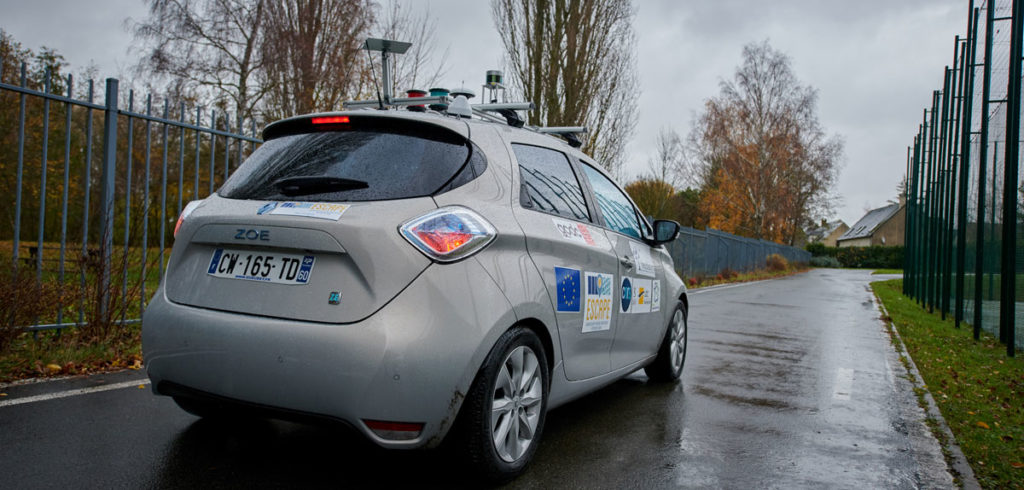The University of Technology of Compiègne, France, has hosted a live demonstration of the first autonomous vehicle powered by Galileo. As part of this demonstration, a Renault Zoe electric car was autonomously driven on tracks and on public roads.
Participants in the event had the opportunity to ride in an autonomous vehicle fitted with an innovative positioning engine developed by the ESCAPE project – the ESCAPE GNSS engine (EGE). The EGE leverages Galileo signals and services to provide a core positioning component in AVs. It was designed and prototyped by the ESCAPE project, funded under the European GNSS Agency’s (GSA) Fundamental Elements program.
“GNSS is a key enabling technology toward fully connected and automated driving,” said GSA executive director Carlo des Dorides. “What we witnessed today (November 27) with the demonstration of the ESCAPE GNSS engine, which leverages Galileo’s multi-frequency and multi-constellation capability, is actually a glimpse of what ‘driving’ will look like in the near future, and is a key milestone bringing us ever closer to full automation.”
“The information available from the Galileo GNSS constellation should contribute to the deployment of vehicles with autonomous driving capabilities and to enhance our location-dependent ADAS,” added Patrick Bastard, research director at Groupe Renault. “The results from the ESCAPE project on the integrity associated with the estimated vehicle location are very important; they are an enabler for the deployment of any safety critical vehicle application. It tells us about the ‘quality’ of the estimates, thus their usability.”
The EGE prototype design includes a novel multi-frequency, multi-constellation automotive-grade GNSS receiver. It is able to precisely and simultaneously process signals from two different GNSS bands and from different satellite constellations. Although this capability is common in high-end professional receivers, it is said to be cutting-edge in the automotive Tier 2 landscape.
The receiver is also a first-of-a-kind device in its segment to support Galileo’s new Navigation Message Authentication (NMA) service – the open E1 signal. Finally, the new GNSS receiver comes with several core signal-processing enhancements: better receiver sensitivity and tracking capability, multipath mitigation, more intermediate frequency (IF) channels and flexibility in routing IF samples, jamming detection and mitigation, and optimization of the GNSS data flow.
The result, say its creators, is an ESCAPE GNSS sensor that combines a high-end GNSS technology traditionally reserved for professional applications, innovative dual-band Galileo processing, as well as all the hardware and software safety aspects that are needed to certify the component for the automotive market.
Image: ©GSA


